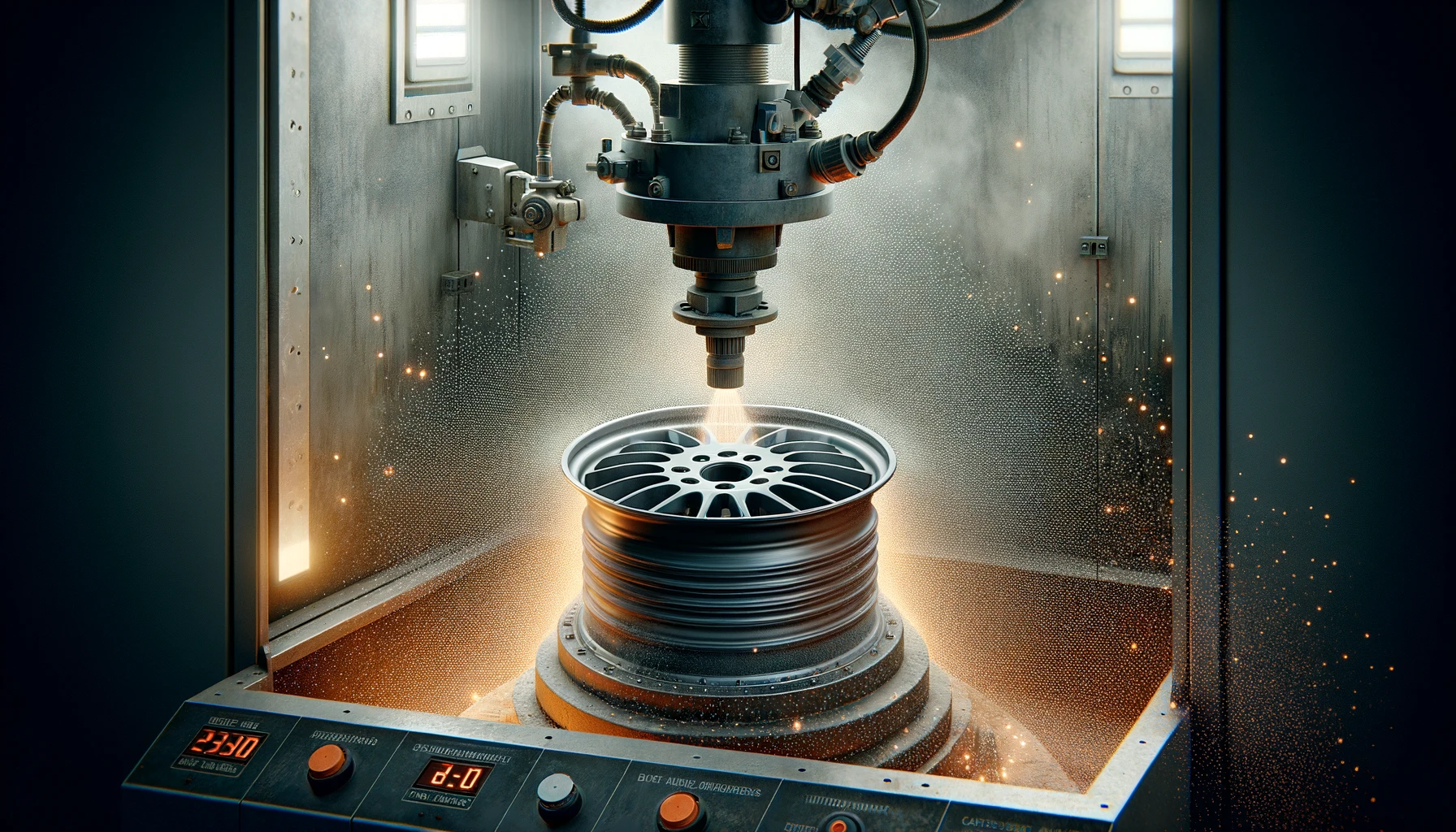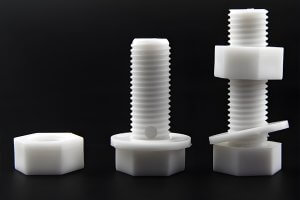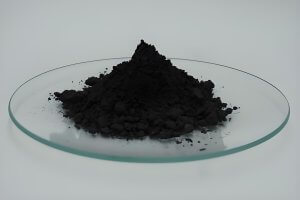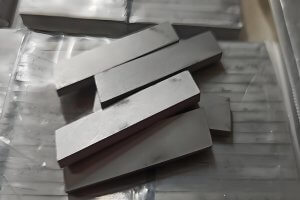Introduction
The art and science of CNC machining transcend mere subtraction of material; it’s a dance of precision, where every micron and every second counts towards the ultimate goal: unparalleled part strength and reliability. This narrative unfolds through the strategic integration of various techniques and processes, from the initial preparation of the metal surface to the final touches that seal its fate against wear and environmental threats. In this comprehensive exploration, we delve into the minutiae of processes like bead blasting, the alchemy of heat treatment, the precision of advanced engineering practices, and the protective embrace of finishing techniques, all orchestrated to fortify the very essence of CNC machined parts.
Understanding Part Strength in CNC Machining
In the domain of CNC machining, the concept of part strength transcends mere material toughness; it embodies the culmination of material choice, design ingenuity, and the precision of the machining process. The meticulous orchestration of tool paths, cutting speeds, and coolant application plays a pivotal role in preserving the material’s integrity, thereby ensuring the final part can withstand its intended operational stresses. Advanced strategies, such as employing dynamic milling techniques and optimizing tool engagement, can significantly mitigate the introduction of residual stresses and heat-affected zones, which, if left unchecked, could lead to material degradation and reduced part life.
Furthermore, the selection of tooling and machining parameters based on the material’s properties is crucial. For example, machining softer materials like aluminum requires different strategies compared to tougher alloys like Inconel. This adaptation is essential to prevent material deformation and ensure the final part maintains the desired geometric and material strength characteristics.
The Role of Bead Blasting in Surface Preparation
Bead blasting, often perceived merely as a cleaning operation, holds significant importance in the pre-machining and post-machining phases. By propelling fine beads at high velocities towards the target surface, this process not only eradicates surface contaminants but also uniformly textures the surface. This texture is pivotal for coatings or subsequent machining operations, providing an ideal surface for enhancing adhesion and reducing the likelihood of coating failures or weld defects.
Case Study: In the refurbishment of an industrial gas turbine, bead blasting was employed to prepare the titanium blades for a critical coating process. The blades, subjected to extreme temperatures and pressures, required a coating that could withstand these conditions without flaking or degradation. Bead blasting ensured a uniform, clean surface that was crucial for the coating’s adherence, directly impacting the turbine’s efficiency and longevity.
Data Table: Bead Blasting Media Comparison
| Media Type | Hardness (Mohs) | Application | Surface Finish |
|---|---|---|---|
| Glass Beads | 5-6 | Cleaning, Finishing | Smooth |
| Aluminum Oxide | 9 | Aggressive Removal | Rough |
| Steel Shot | 7-8 | Peening, Texturing | Medium |
| Plastic | 3-4 | Delicate Surfaces | Very Smooth |
Note: The table provides a general overview, and specific applications may vary.
Enhancing Material Properties Through Heat Treatment
Heat treatment processes serve as the alchemists’ fire in the realm of material science, transforming the very essence of the metal to meet the exacting demands of strength and durability. Processes such as annealing relax the metal, relieving internal stresses and improving machinability. Quenching followed by tempering can significantly increase the hardness and toughness of the material, making it more resistant to wear and fatigue.
In the context of CNC machining, the strategic application of heat treatment can dramatically alter a part’s lifecycle. For instance, gears subjected to heat treatment can withstand higher torque and exhibit less wear over time compared to their untreated counterparts. This enhancement is particularly crucial in automotive and aerospace applications, where part failure can have dire consequences.
Data Table: Heat Treatment Effects on AISI 4140 Steel
| Treatment | Temperature (°C) | Cooling Method | Hardness (HRC) | Tensile Strength (MPa) | Yield Strength (MPa) | Elongation (%) |
|---|---|---|---|---|---|---|
| Annealed | 850 | Furnace | 28 | 655 | 417 | 25.7 |
| Normalized | 870 | Air | 38 | 981 | 655 | 21.5 |
| Quenched | 845 | Oil | 54 | 1345 | 1080 | 15.8 |
| Tempered | 540 | Air | 50 | 1226 | 1053 | 17.4 |
| Tempered | 650 | Air | 45 | 1138 | 931 | 20.1 |
Note: The above data is illustrative and may not reflect precise industrial results.
Precision Engineering for Optimal Part Strength
The art of precision engineering in CNC machining lies in the meticulous planning and execution of each machining operation to not only meet dimensional tolerances but also to ensure the machined part can endure its operational demands without failure. This involves leveraging state-of-the-art machining centers, tools with precise geometries, and cutting-edge materials to minimize tool wear and material deformation during the machining process.
For instance, the use of carbide or diamond-tipped tools allows for higher cutting speeds and feeds, which, when combined with optimal tool paths generated from sophisticated CAM software, can significantly reduce the introduction of residual stresses within the material. Moreover, the advent of 5-axis CNC machines has revolutionized the machining of complex parts, allowing for the machining of intricate geometries in a single setup, thus maintaining the alignment and uniformity of the machined features, critical for maintaining the part’s structural integrity.
The role of precision engineering extends beyond the machining process into the realm of metrology, where advanced measurement techniques ensure that the machined parts meet the stringent tolerance requirements. Techniques such as laser scanning and coordinate measuring machines (CMMs) provide micron-level accuracy in measuring part dimensions, ensuring that each component fits perfectly within its assembly, distributing loads evenly and enhancing the overall strength of the final product.
Integrating CAD/CAM for Advanced Design and Machining
The seamless integration of Computer-Aided Design (CAD) and Computer-Aided Manufacturing (CAM) systems marks a cornerstone in modern manufacturing, bridging the gap between digital blueprints and physical parts. These sophisticated software platforms empower engineers to meticulously design parts with complex geometries and integrated features that are optimized for strength without excessive material use, adhering to the principles of lightweighting and material efficiency.
Advanced simulation capabilities within these systems allow for virtual stress testing and load analysis, enabling designers to identify potential weak points and adjust the design accordingly before any material is cut. This predictive capability, often augmented by Finite Element Analysis (FEA), provides a deeper understanding of how the part will behave under real-world conditions, allowing for design optimizations that significantly enhance part strength and durability.
Data Table: CAD/CAM Software Features for Strength Optimization
| Software | FEA Capabilities | Material Library | Simulation Accuracy | User Interface | Integration with CNC |
|---|---|---|---|---|---|
| Software A | Advanced | Extensive | High | Intuitive | Seamless |
| Software B | Moderate | Limited | Medium | Complex | Manual |
| Software C | Basic | Moderate | Low | Simple | Requires Adaptation |
The table above exemplifies how different software solutions cater to the needs of strength optimization, each with its unique set of features, from extensive material libraries to advanced FEA capabilities, thus enabling manufacturers to select the most suitable software for their specific needs.
Case Studies: Success Stories of Integrated Machining Strategies
Delving into the realm of real-world applications, the integration of advanced machining strategies has led to significant breakthroughs in part strength and durability across various industries. For example, in the field of medical implants, the combination of precision machining with surface treatments like bead blasting and specialized coatings has resulted in implants that not only exhibit exceptional strength but also promote osseointegration, enhancing the implant’s longevity and patient outcomes.
Another illustrative case is found within the automotive industry, where high-performance components such as engine pistons and connecting rods are subjected to extreme conditions. Through the integrated application of precision engineering, heat treatments, and surface coatings, these components achieve a balance of strength and lightweighting, contributing to the overall performance and efficiency of the vehicle.
The Impact of Finishing Processes on Part Strength
Finishing processes in CNC machining encompass a wide array of techniques designed not only to enhance the visual appeal of machined parts but also to significantly augment their functional properties, including strength and durability. These processes, ranging from anodizing and plating to powder coating, play a pivotal role in the part’s lifecycle by providing protective layers that shield the underlying material from environmental and operational stresses, thereby extending the part’s service life.
Anodizing, for example, is a widely used finishing process for aluminum parts that enhances corrosion resistance and surface hardness through the electrochemical conversion of the metal surface into a durable, corrosion-resistant anodic oxide finish. This oxide layer, while thin, is incredibly hard and integrates seamlessly with the aluminum substrate, providing significant protection against wear and tear without compromising the part’s dimensional tolerances.
Similarly, plating processes, such as electroplating with metals like chromium or nickel, offer not only aesthetic enhancements but also substantial improvements in surface hardness and resistance to corrosive elements. These plated layers, when applied correctly, can significantly reduce the wear rate of parts, making them ideal for high-wear applications such as gears and bearings.
Powder coating, another popular finishing technique, involves applying a dry powder—typically a thermoplastic or thermoset polymer—to the part’s surface and curing it under heat to form a “skin.” This coating is thicker than traditional paint, providing superior durability, corrosion resistance, and impact resistance, making it an excellent choice for parts exposed to harsh operational conditions.
Completed Data Table: Impact of Various Finishing Processes on Aluminum Parts
| Finishing Process | Corrosion Resistance | Surface Hardness (Mohs) | Impact Resistance | Wear Resistance | UV Resistance | Chemical Resistance | Thickness (μm) |
|---|---|---|---|---|---|---|---|
| Anodizing | Excellent | 8-9 | Moderate | High | Excellent | Excellent | 5-25 |
| Powder Coating | Good | 6-7 | High | Moderate | Very Good | Good | 60-250 |
| Plating (Chrome) | Very Good | 8-9 | Low | Very High | Good | Good | 0.5-20 |
| Bare (No Finish) | Poor | 2-3 | High | Low | Poor | Poor | N/A |
| Electroless Nickel | Very Good | 5-7 | Moderate | High | Good | Excellent | 5-50 |
| Hardcoat Anodizing | Excellent | 8-9 | Moderate | Very High | Excellent | Excellent | 25-150 |
| Zinc Plating | Good | 4-6 | Moderate | Good | Good | Moderate | 5-15 |
| Black Oxide | Moderate | 4-5 | Moderate | Moderate | Moderate | Moderate | 1-10 |
| Clear Coat | Moderate | 3-4 | Moderate | Moderate | Very Good | Moderate | 20-80 |
| PVD Coating | Excellent | 8-10 | High | Very High | Excellent | Very Good | 1-5 |
Note: The data provided in the table is illustrative and intended for general comparison. Actual results can vary based on specific process parameters, part geometries, and environmental conditions.
By judiciously selecting and applying these finishing processes, manufacturers can significantly enhance the operational lifespan, performance, and aesthetic appeal of CNC machined parts, ensuring they meet or exceed the stringent demands of their intended applications.
Conclusion
The intricate dance of CNC machining, from the initial touch of bead blasting to the final flourish of advanced finishing processes, embodies a symphony of precision, innovation, and strategic foresight. Each step, each decision, is a deliberate stroke on the canvas of manufacturing, where the pursuit of part strength is both an art and a science.
In this journey, we’ve traversed the landscape of CNC machining, delving into the nuances of surface preparation, material enhancement through heat treatment, the marvels of precision engineering, and the pivotal role of CAD/CAM integration in preemptively sculpting part resilience. Our exploration was punctuated with real-world sagas—case studies that breathed life into the technical discourse, illustrating the tangible impact of these integrated strategies in fields as diverse as aerospace, automotive, and medical devices.
The finishing processes, often unsung heroes, were revealed to be the final guardians of part strength, bestowing wear resistance, corrosion protection, and aesthetic appeal upon the machined parts. The detailed tables provided not just data, but narratives of potential, guiding choices and strategies in the quest for optimal part strength.
As we stand on the threshold of future advancements, the integration of emerging technologies such as AI-driven predictive modeling, additive manufacturing for complex geometries, and nano-scale surface engineering promises to further elevate the standards of part strength and durability. The confluence of traditional machining wisdom with avant-garde innovations heralds a new era in manufacturing, where the limits are continually redefined, and the potential is boundless.
In this relentless pursuit of excellence, the role of the machinist, the engineer, and the designer is ever-evolving, blending craftsmanship with computational prowess, intuition with analytics. As we look ahead, the narrative of CNC machining and part strength continues to unfold, inviting each one of us to contribute a verse, a chapter, to this ongoing saga of creation and innovation.
Other Articles You Might Enjoy
- Precision CNC Machining for the Aerospace Defense Industry
Precision CNC Machining in the Aerospace Defense Industry In modern manufacturing sectors, precision Computer Numerical Control (CNC) machining plays a critical role. It is an automated process that uses pre-programmed…
- Understanding Bead Blasting in CNC Machining(compressive strength Otto)
Bead blasting is a process appended to Computer Numerical Control (CNC) machining used prominently for surface finishing. It gives the products a clean and appealing look by eliminating tool marks…
- The Evolution of CNC Machining: From Aluminum to Composite Materials
Introduction to CNC Machining CNC (Computer Numerical Control) machining is a manufacturing process that utilizes computerized controls to initiate and manipulate machine tools, such as lathes, mills and grinders. With…






